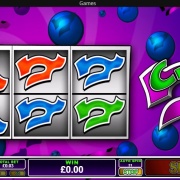It is especially effective when painting textiles with smooth colour transitions, such as satin or silk. This is an easy way to create a realistic looking boa. This workshop originally appeared in ImagineFX. There are dozens of possibilities for interesting patterns, as long as you keep resizing and rotating the brushes. It’s easy to use – place it on a new layer (with the Multiply mode on) over the object to texture and you’re done! Photoshop:
Opacity: 20-80%
Flow: 50%
(Shape Dynamics) Size Jitter: 0%
Minimum Diameter: 10%
(Other Dynamics) Opacity Jitter: 0%
Painter:
Tinting: Basic Round
Opacity: 10-30%
Resat: 20%
Bleed: 100%
Jitter: 0%
Tinting: Blender
Opacity: 5-10%
Grain: 0%
Resat: 70%
Bleed: 100%
Jitter: 0%
Blenders: Just Add Water
Opacity: 10-40%
Resat: 0%
Bleed: 50%
Jitter: 0%
04. Photoshop:
Opacity: 10-70%
Flow: 50%
(Shape dynamics) Size jitter: 0%
Minimum diameter 10%
Angle Jitter: 11%
(Scattering) Both axes, 294%
Count: 1
Count Jitter: 98%
(Other dynamics)
Opacity Jitter: 0%
Flow Jitter: 0%
Painter:
Unavailable
09. Remember to keep the brush size small and change the hue from time to time. Photoshop:
Opacity: 70-100%
Flow: 50%
Spacing: 50%
Shape Dynamics:
Size Jitter: 0%
Min diameter: 0%
Painter:
Thick And Thin Pen
Opacity: 100%
Resat: 100%
Bleed: 0%
08. This brush was made by accident, but it proved great for creating stains on textiles, especially for a spattered blood effect. You might want to blur it slightly for a more realistic effect. She’s currently a freelance illustrator. The various options offered by today’s painting software are not only making it possible for digital artists to recreate all of the effects of traditional media, but also enabling them to create their own brushes of a kind that were inaccessible to the old masters. Brocade
I use this spackled brush for texturing brocade fabrics. Material patterns
This is a set of three stamp brushes that I frequently use to create floral patterns for my characters’ dresses. Lace
This stamp brush is extracted from a veil photograph I made and is perfect for texturing lace in garments or objects. Photoshop:
Opacity: 100%
Flow: 50%
Painter:
Unavailable
07. Embroidery
With its sparse spacing this brush looks a bit pixellated, which is a great means of achieving a realistic thread effect. Remember to keep your brush size very small at all times! To touch up, play with the Opacity and Layer modes to see if you can enhance the created effect. Glows
This little stamp brush is extremely useful for all kinds of jobs. When the first strokes are done, use the Gaussian Blur tool on it. To get the best from this brush always use it at full opacity, constantly adjusting the lightness between the applications. In addition it can be used to create the fairy dust effect. Photoshop:
Opacity: 90-100%
Flow: 50%
Painter:
Tiny Spattery Airbrush
Opacity: 75%
Spread: 45%
Flow: 1
Feature: 9
03. The more layers of thread you lay down, the thicker the embroidery will look. I created the custom brushes outlined here in Photoshop, but, where possible, I am also sharing Corel Painter’s brush settings for achieving similar effects. Afterwards, use the Feather brush on a low opacity on top of the existing shape. First, block the general shape of the object and roughly shade it, marking the highlights and shadows with an Airbrush. It looks plain, but used correctly it can be extremely powerful. To underline the thickness, form your zigzags into arches instead of straight lines. Silk and satin
This brush is a hybrid between a Ragged Edge Hard Round (described in the first part of this workshop) and an Airbrush, which makes it a fabulous blender and a texturing tool at the same time. Photoshop:
Opacity: 20-50%
Flow: 50%
Painter:
Unavailable
05. 01. Linen texture
This simple spackled brush makes texturing linen easier than ever. After you have the general shape marked with an airbrush tool, add fur strands on a new layer. Spattered Blood
Now here is something for your more morbid paintings! Photoshop:
Opacity: 60-100%
Flow: 50%
Painter:
Airbrushes: Fine Tip Soft Air
Opacity: 5-10%
Resat: 100%
Bleed: 0%
Jitter:
06. Blur (and occasionally rotate) the colour blocks for a natural effect. Such custom brushes – made manually or extracted from photographs – are a wonderful and innovative way to add texture to paintings and have now become a standard tool among digital artists. In the first part of this three-part workshop, I presented various useful brushes for painting characters.
Library builder
Articles about the repair, construction, interior design and landscaping, plumbing, electrical, waterproof wire, wire gas, building materials, construction machinery and equipment ...
Библиотека строительства - статьи о строительстве и ремонте © 2020
Frontier Theme


